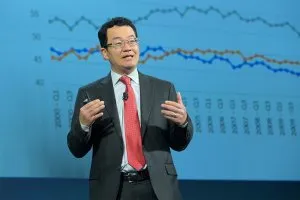Maine Commercial REALTORS® On Board with Sustainable Passenger Rail
Imagine a self-sustaining passenger rail system. In Maine, commercial REALTORS® are working to make one such transit opportunity a reality in the Pine Tree State. And that reality could be a vision for the rest of the country.
The Smart Growth Mobility Project – Maine Rail Transit Coalition will transform an existing, publically owned rail corridor into a sustainable transit system that will increase land values, connect thriving economic hubs and enable walkable communities. Development of the 30-mile rail corridor between Portland and Auburn/Lewiston, known as the St. Lawrence and Atlantic rail corridor (SLR), is possible thanks to a unique collaboration of developers and environmentalists; support by local, state and national leaders; and a self-supportable funding plan that combines both public and private investment. The diverse coalition includes the Maine Commercial Association of REALTORS ® (MCAR) and Sierra Club Maine.
MCAR was recently awarded a $15,000 NAR Smart Growth Grant that not only helped fund a Coalition project study, but is encouraging policy changes in state transportation funding. MCAR board member Tony Donovan explains that the project also aligns with a recent EPA report extolling the importance of real estate in the development of sustainable infrastructure transit options. He adds that coalition members are committed to smart growth and sustainability goals.
“The $15,000 NAR grant probably advanced this project five years. It helped us finish the business plan and get information to everyone involved,” Donovan says. “What is really exciting is that the developers of land — that is the REALTORS® — and the protectors of land — like the Sierra Club — are working together on this project. We’ve developed a really effective relationship.”
The recently completed Smart Growth Mobility Project study identifies the SLR corridor development as “an economical, local-based transit system connecting to jobs centers along the rail corridor. This strategy includes local planning initiatives, state fiscal incentives/disincentives, and state and local policy changes to encourage development of compact, walkable communities, infill areas and transit-orientated development.”
The SLR corridor currently lies idle, but when suitably developed, will not only connect Maine’s two largest economic centers, but will also maximize non-auto transit options by connecting to existing rail lines that reach popular Maine entertainment and recreational destinations and extend to Montreal, Canada.
Donovan, who is a commercial agent with Fishman Realty Group in Portland, says he envisions that three years from now it will be possible to step on a passenger train in Portland after work, ride the rails north to a popular Maine tourist attraction and return home that same night. Or once completed, passengers will be able to board a modern, efficient passenger train in Portland and arrive in Montreal six hours later.
Public and private involvement is integral to every aspect of the project. Train stations will be privately owned, income-generating real estate investments. Private funds will also be used to purchase the passenger rail cars. The proposed $20 million in private investment, combined with an anticipated $27 million state bond will also qualify the project for federal grant monies. The total project cost is estimated to be $138 million.
It is anticipated that the project’s operating costs will be self-sustaining thanks to a multidimensional funding model called value capture. The Smart Growth Mobility Project study explains how value capture will work. “The transit enhances business and neighborhoods, so it is only fair that those businesses and neighborhoods support the transit.” Properties within ¾ mile rings around the five rail stations would be subject to property assessments. Real estate within these five transit districts is valued in excess of $2 billion. Planners predict those assessments, combined with passenger fares will create a sustainable system.
The project is quickly moving beyond the study stage. State lawmakers recently directed the state’s Department of Transportation to seek funding for engineering of construction along the 30-mile rail corridor. Legislators will next establish a task force that will identify potential state bonds. And corridor transit districts around the five communities that will be served by the new rail line will be designated. Economic activity and increased land value created by the presence of rail in each local transit district will make it feasible to implement form-based code and value capture funding.
“Everything is possible by smart growth planning at the community level. It is the local communities’ responsibility to do their own land planning,” Donovan explains. “Need dictates land use and value. We create value in real estate to fund our mobility needs. And when it comes to understanding local needs and land value, who knows better than the REALTOR® community — both commercial and residential REALTORS®.”
Thanks to their understanding of community needs, establishment of innovative partnerships and support of creative financing options, Maine commercial REALTORS® and the Smart Growth Mobility Project are putting Maine on the fast track for livable communities, sustainable transit and smart growth development.
Inclusion and Education Empowering Planned Growth in Mississippi
It’s a misplaced fear. All too often rural property owners and local residents voice concerns about how smart growth concepts could affect property rights. To combat that misinformation, REALTORS® from southern Mississippi’s Pearl River County educated local leaders and state lawmakers about the goals and benefits of smart growth concepts at a first-of-its-kind gathering in Mississippi. Pearl River County Board of REALTORS® worked with the Center for Planning Excellence and Placemakers to bring NAR’s “Smart Growth for the 21st Century” presentation to a packed house of local REALTORS® and officials. The Picayune, Miss., presentation last fall was one of nearly two dozen NAR smart growth classes held across the country in 2012.
Deborah Benoit, broker with Plantation Properties and member of the Pearl River County Board of REALTORS® decided to help educate area REALTORS® and local officials after attending a smart growth conference and seeing the principles in practice. She knew it might be a hard sell back home, but she realized people would appreciate the opportunity to learn more.
“We have a small, close-knit community and this isn’t a real familiar concept here,” Benoit explained. “Many people were initially suspicious because they are afraid it could impact local property rights. But everyone who attended went away with a very positive attitude. They all agreed that smart growth was very different than what they had thought.”
Approximately 60 people attended the smart growth presentation last fall. The audience included Mississippi State Senators Tony Smith and Angela Burks Hill, Picayune Mayor Ed Pinero, Picayune city council members, Pearl River County officials and members of the economic planning commission.
“This was the first time any state senator attended this NAR class,” said Hugh Morris, with the NAR smart growth program. “In fact, as a result of the success of the Pearl River County class, we were asked to present the program at the statewide convention. That was a nice spillover effect.”
Picayune Mayor Pinero supported the Pearl River County educational summit and even opened the meeting. He explained to the Picayune Item, the local newspaper, how smart growth concepts could benefit his community. “In some way you have to manage growth. Things like this can help us manage our placement. Having a vision makes it easier for planners, developers and finally marketers to get the word out about our community and what we have to offer. The more people we attract, the more money gets spent in our local establishments and that leads to more ad valorem tax we collect to go back into our city.”
Benoit agrees with Mayor Pinero that planned growth is essential to community development and she’s active with the area’s Coalition for Community Excellence, which is examining how to implement appropriate smart growth concepts to help improve community livability. As part of the visioning process to name potential projects, the Pearl River County Board of REALTORS® casually questioned nearly 100 residents about what they would like to see in their community. The vast majority of respondents favored development of family recreational options. The Coalition also drew from recommendations listed in the city of Picayune’s adopted long-range plan.
“We worked with the Center for Planning Excellence in Baton Rouge on a visioning planning session. That was step two in our process,” said Benoit. “We indicated that we can benefit from things like beautification, awareness and a sense of being part of the community. The third step may be a future walkshop — a workshop which includes a walking tour — where areas of blight and potential could be identified. I attended a walkshop in nearby Starkville where we saw firsthand how they are revitalizing old buildings.”
With each step in the process, members of Pearl River County Board of REALTORS® and local officials are realizing that education and inclusion are the keys to long-term success.
“We’ve learned a lot over the last two years,” says Benoit “Now I see why it’s so important to start with education. NAR has it right. It’s important to explain what you’re about and what you’re planning to do. The way to get on the right foot is to get everyone involved. It’s a slow process, but we’re seeing real progress. We need to lead by example. We’re lighting the spark.”








